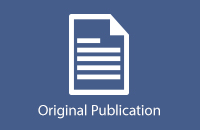 Full Guidelines
Full Guidelines
Click here to view article

 Tools
Tools


 Additional Documents
Additional Documents
Click here to see additional documents

 Endorsements
Endorsements
This Clinical Practice Guideline has been endorsed by the Canadian Stroke Network.
The Hypertension Poster for Clinicians has been endorsed by Hypertension Canada.

 Calculate by QxMD
Calculate by QxMD
This guideline and KT tool(s) are available on QxMD. Click here to download the app.
Summary of recommendations for clinicians and policy-makers
Recommendations are provided for screening for hypertension in adults aged 18 years and older without previously diagnosed with hypertension. Recommendations apply to the general population including adults with average baseline blood pressure and those at higher than average risk of hypertension and vascular risk. These recommendations do not apply to individuals who have already received a confirmed diagnosis of hypertension.
Recommendations
- We recommend blood pressure measurement at all appropriate primary care visits Note ‘Appropriate’ visits may include new patient visits, periodic health exams; urgent office visits for neurological or cardiovascular related issues, medication renewal visits, and other visits where the Primary Care Practitioner deems it an appropriate opportunity to monitor blood pressure. It is not necessary to measure blood pressure on every patient at every office visit if not clinically indicated.Note The frequency and timing of blood pressure screening may vary between patients. The risk of high blood pressure and the risk of stroke or heart disease change over a person’s natural lifespan and increases with age, comorbidities, and the presence of other risk factors. Therefore appropriate screening frequency may increase accordingly, especially in patients with more than one vascular risk factor. Adults identified as belonging to a high-risk ethnic group (South Asian, Aboriginal, African ancestry) may benefit from more frequent monitoring. Having recent consistently normal blood pressure measurements may decrease the need for monitoring, whereas a tendency toward high-normal blood pressure could indicate that more frequent monitoring is needed..
(Strong recommendation; moderate quality evidence) - We recommend that blood pressure be measured according to the current techniques described in the Canadian Hypertension Education Program CHEP recommendations for office and out-of-office (ambulatory) blood pressure measurement.
(Strong recommendation; moderate quality evidence) - For people who are found to have an elevated blood pressure during screening, the CHEP criteria for assessment and diagnosis of hypertension should be applied to determine whether the patient meets diagnostic criteria for hypertension.
(Strong recommendation; moderate quality evidence)




